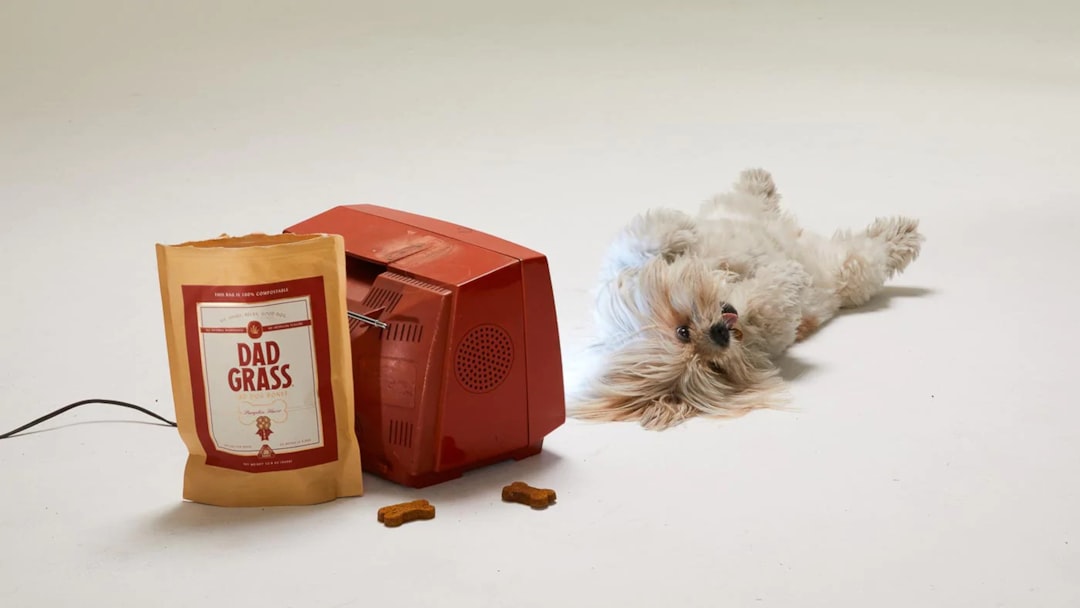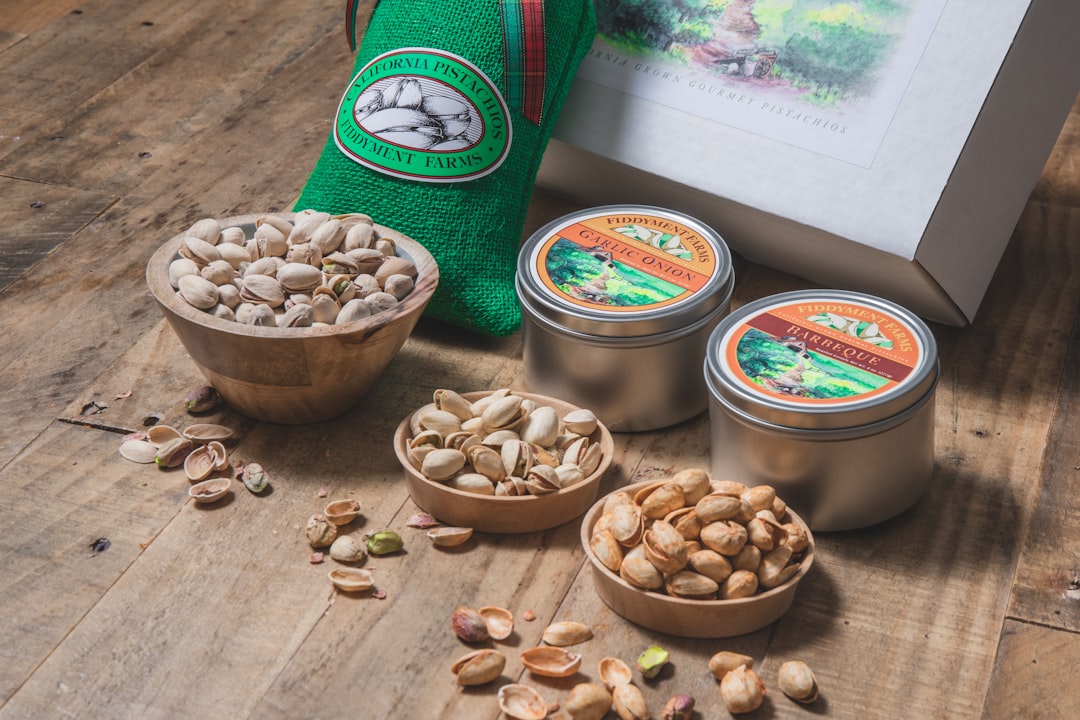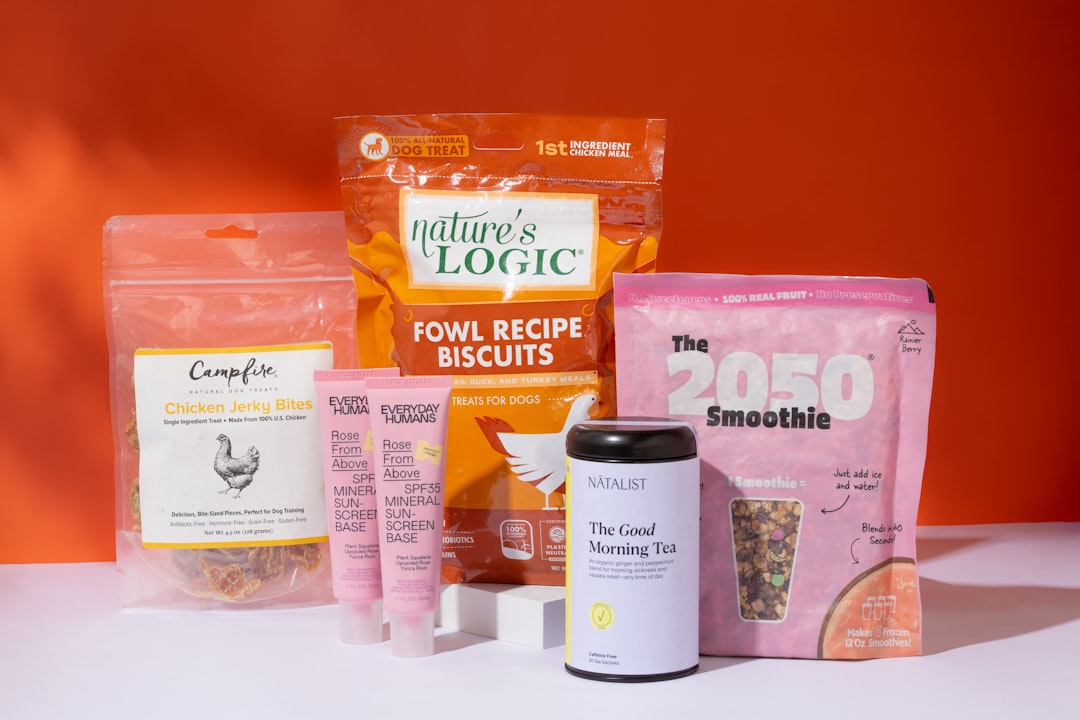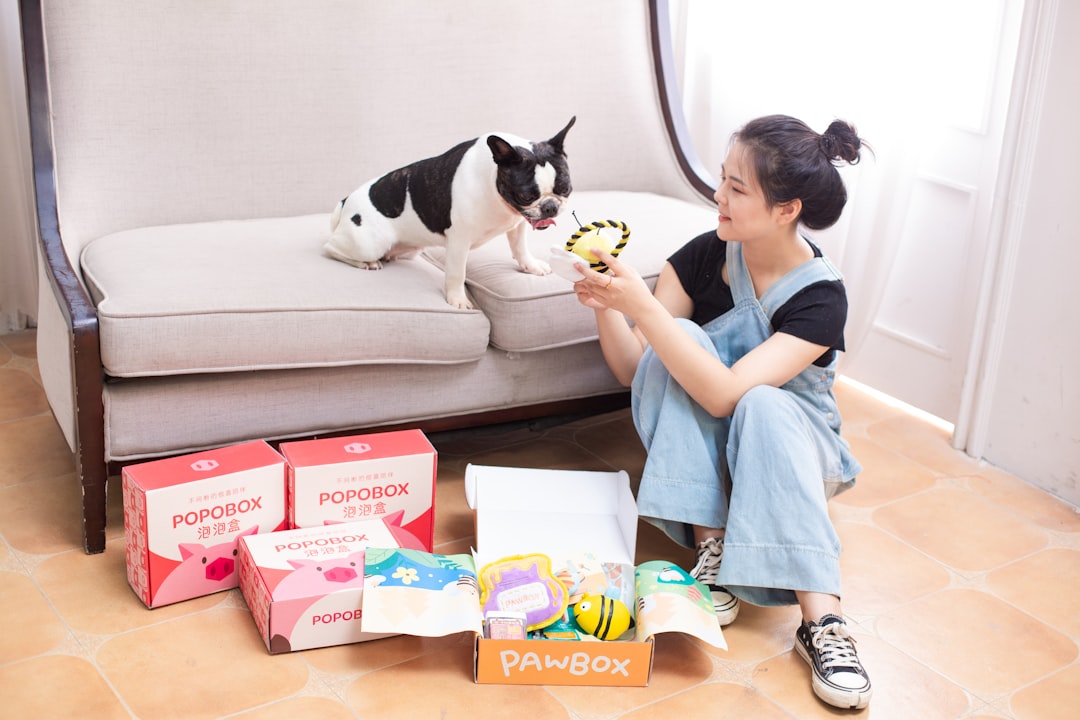

Engage prospects with a scan and streamline customer engagement with FREE QR code marketing tools by Sona – no strings attached!
Create a Free QR CodeFree consultation

No commitment

Engage prospects with a scan and streamline customer engagement with FREE QR code marketing tools by Sona – no strings attached!
Create a Free QR CodeFree consultation

No commitment
In today’s digitally driven landscape, QR codes are rapidly transforming how pet food brands connect with pet owners. Yet, many brands struggle to translate physical shelf engagement into meaningful digital relationships. Missing high-value prospects, such as owners who browse pet food aisles but never fill out a form online, often leaves marketers with incomplete data and missed opportunities to nurture loyalty. By instantly bridging the gap between packaging and real-time insights, QR codes present a strategic opportunity for pet food companies to surface buyer interest, respond to industry demands for transparency, and build actionable customer profiles, all without requiring pet owners to download another app or follow cumbersome processes.
From a single scan, brands can showcase in-depth information about pet nutrition, ethical sourcing, and ingredient transparency, allowing buyers to make more informed decisions. QR codes printed on packaging can also unlock instant access to consumer reviews, feeding guides for different pet types and life stages, or sign-up offers for pet food donations, directly addressing key questions and search intents around quality, safety, and animal welfare. Without mechanisms to capture and link these micro-interactions to CRM or campaign tools, brands risk letting valuable engagement slip through the cracks.
As competition for loyalty intensifies, incorporating QR codes into packaging is not just a trendy update, it is a proven strategy to deepen engagement, unify messaging, and continually improve satisfaction. By streamlining data flows between offline touchpoints and digital audiences, QR adoption helps pet food brands deliver targeted experiences and fix long-standing challenges around visibility, segmentation, and measuring real campaign impact.

Many pet food brands face the challenge of anonymous or low-fidelity interactions at the point of sale, making it difficult to know which products, claims, or offers actually drive buyer engagement. Static printed brochures and generic web links often fail to capture actionable signals about who is engaging, what they care about, or how to continue the conversation beyond the aisle. QR codes create a direct line from every bag or can to digital content, helping pet owners compare brand reviews, access nutritional data, and participate in CSR initiatives.
The most successful programs replace analog touchpoints with trackable, personalized experiences. Instead of paper inserts with feeding charts, a scan can open a dynamic tool that tailors portion sizes to a pet’s breed, age, and activity level. Instead of a generic homepage URL, a scan can take shoppers to product-specific pages with third-party certifications and vet endorsements. These upgrades make every scan a measurable moment, building a richer picture of real interest and intent that teams can act on.
Modern QR platforms now enable seamless integration of scan activity into CRMs and ad systems. A grain-free line, for example, can deploy unique QR codes per recipe, track which variants attract the most interest, and learn whether those scans lead to a review, a repeat purchase, or a social share. Over time, this gives marketers a reliable view of which claims and formats convert curiosity into loyalty. Start creating QR codes for free.

A major industry pain point is the lack of visibility into who is researching, comparing, and ultimately choosing between pet food brands, particularly since pet owners want instant, app-free access to information. When shoppers engage anonymously in the aisle or never complete online forms, valuable buying signals vanish and marketing teams are left to guess which messages and channels truly drive intent.
QR codes remove this guesswork by turning every package into a digital bridge. With one scan, shoppers can open nutrition content, third-party test results, or recall information without barriers. Static print can become dynamic content that evolves with market trends or new certifications, and every interaction can be measured and tied to downstream behavior, such as subscriptions, cart adds, or survey completions.
For pet food brands, QR codes are not just a convenience feature, they are a strategic layer that supports transparency, trust, and measurable growth. When scans and outcomes are connected in a central dashboard, teams can prioritize content that resonates, drop what does not, and continually refine the customer experience.
Many brands struggle with disconnected journeys and limited targeting because they rely on generic QR deployments. In reality, different QR formats fit different purposes, and using the right one for each moment helps unify data capture and messaging.
Dynamic QR codes are the default for most growth-focused brands. They allow you to edit the destination, A/B test offers, and append UTM parameters months after printing. Static codes still have a place for evergreen assets like a general feeding guide PDF. However, dynamic codes with a management platform like Sona QR give you the agility and analytics required to keep messaging fresh and measurable.

Brands often overlook pivotal offline-to-online moments that drive new engagement. Growth accelerates when QR codes appear where intent is naturally high, and when calls to action match what shoppers want in that moment. The goal is not to add codes everywhere, but to align each placement with a clear job to be done and a measurable outcome.
Deploy QR codes strategically across the buyer journey and product lifecycle. On-shelf codes should help shoppers compare and decide. On-pack codes at home should help owners serve, monitor, and reorder. At events, codes should capture preference data and permission to nurture. In direct mail and subscription boxes, codes should deepen loyalty and provide exclusive perks that reinforce long-term value.
Innovators assign unique codes by SKU, region, and campaign. This creates the granularity required for smarter creative testing and budget allocation. With Sona QR, you can manage this complexity at scale, eliminate guesswork, and direct spend toward placements that reliably convert.

Pet owners crave clarity and confidence, yet brands often deliver scattered digital journeys that bury the information people need most. QR-enabled workflows make quality and care visible, then convert that trust into actions that drive growth and retention.
A strong use-case portfolio should cover consideration, purchase, and post-purchase. During consideration, help shoppers compare nutrition and sourcing facts. At purchase, reduce friction to validate claims and ensure proper feeding. After purchase, make ongoing support easy and rewarding, which sets the stage for retention and advocacy.
Tie each use case to a specific goal. For example, comparison hubs may aim for a 20 percent lift in on-shelf conversion, while CSR programs may target a 30 percent increase in scan-to-donate actions during campaign windows. By connecting scans to measurable outcomes, you can document ROI and refine messaging quickly.
Every scan captures intent, context, and behavior. When you deploy multiple QR codes across packaging, displays, mailers, and events, you create a high-fidelity signal system that segments your audience automatically. This data fuels precise retargeting and personalized follow-up, leading to higher conversion rates and lower acquisition costs.
Start by labeling codes according to the buyer journey and product variant. A shopper who scans a “puppy formula feeding guide” in-store signals different needs than someone scanning a “senior cat formula subscription” insert at home. With Sona QR, you can send these distinct audiences to your CRM, trigger the right nurture sequences, and build custom audiences for paid media that map to real-world behaviors.
This approach lets you market to “who they are” and “what they need now” instead of relying on generic personas. Over time, you will see stronger repeat purchase rates, higher review volumes, and more efficient ad spend.
Pet food customer journeys cross physical and digital environments constantly. A shopper may discover your brand at the dog park, research in the aisle, purchase online, and manage feeding at home. QR codes unify these moments, turning print and packaging into launchpads for digital content while returning analytics that make every channel smarter.
Treat QR codes as connectors rather than add-ons. Align codes to the intent of each channel, choose destinations that respect context, and standardize your tracking. With a central platform like Sona QR, you can monitor performance across placements and adapt creative quickly to what actually works.
By treating QR codes as the offline onramp to your digital engine, you unlock real-time insights across channels that once felt impossible to measure. Sona QR centralizes code management, reporting, and CRM sync so your team can execute with confidence.
Brands often fail to achieve results not because the creative is weak, but because activation is inconsistent or measurement is incomplete. A reliable execution framework keeps each campaign grounded in a clear goal, a compelling call to action, and a measurable path to improvement.
Use the following steps to plan, launch, and optimize QR-enabled initiatives that connect packaging and physical placements to digital outcomes. Each step includes design, placement, and analytics considerations specific to pet food brands.
Start by defining the business outcome. Decide whether your campaign is focused on reviews, subscriptions, ingredient education, donation participation, or retailer-specific promotions. Clarity at this stage keeps creative on message and ensures the destination is fit for purpose.
Choose the right code for your objective. Dynamic QR codes support editable destinations, analytics, and retargeting. Static codes are best for assets that rarely change, such as a general feeding guide PDF.
Design influences whether people notice your QR code and understand why to scan. Testing ensures a good experience in the real world, not just on a designer’s screen.
Roll out your codes where they will be seen and where the CTA makes sense. Use channel-appropriate offers and creative that respects buyer context.
Measurement closes the loop and prevents your campaign from becoming a one-time novelty. Treat scan activity like a performance channel with clear standards and continuous improvement.

Incomplete or outdated engagement data leads to fuzzy targeting and wasted media spend. For pet food brands, proving what drives subscriptions, positive reviews, and repeat purchases is essential to scaling what works and stopping what does not. Scans are only the beginning. What matters is connecting them to downstream outcomes and revenue.
With Sona QR and Sona, you can turn every scan into actionable insight. Centralized dashboards reveal which placements work best, Sona identity resolution links anonymous scans to known buyers when possible, and multi-touch attribution maps how QR interactions shape the path to subscription, review, or reorder. This closes the loop from shelf curiosity to purchase and retention.
This depth of analytics transforms QR codes from a tactical add-on into a performance channel. When every scan is visible and attributable, teams can invest with confidence and report results that matter.
Scaling QR impact requires consistent tracking, benefit-driven messaging, and automation that keeps the journey moving after the first scan. The following best practices align with the media and buyer behaviors common in pet food, from packaging to events and subscription programs.
Start with clarity and convenience. Owners scan when value is obvious and immediate. Reinforce that value with clear CTAs and fast-loading destinations. Then ensure every scan drops into a system that continues the conversation with relevant follow-up.
Creative deployments can multiply impact. For example, include a QR code on a loyalty card that unlocks tiered rewards after each purchase, or place QR stickers on foster pet starter kits that guide new owners through feeding transitions and product recommendations. Every scan builds your audience and sharpens your messaging.
QR codes offer pet food brands a clear digital edge, solving chronic pain points around visibility, segmentation, and measurement. By connecting every product to meaningful content and real engagement signals, modern QR solutions make it possible to capture and activate each step of the customer journey. The result is not only better-informed shoppers, but also a data-rich foundation for reviews, subscriptions, and long-term loyalty.
The adoption of QR codes in pet food is reshaping how companies reach and understand discerning pet owners. When strategically deployed and integrated with platforms like Sona QR and Sona.com, QR technology unlocks transparency and trust at the scan of a package while resolving long-standing challenges around unknown leads, outdated data, and disconnected campaigns. With audience segmentation, CRM integration, and revenue attribution in place, marketers can personalize journeys, prevent churn, and optimize spend. Brands that commit to this approach are best positioned to turn curiosity into loyalty and deliver the nutritional integrity and community impact today’s pet parents expect.
QR codes have transformed pet food brands from simple packaging into powerful, interactive marketing tools. They enable brands to engage pet owners more deeply, providing instant access to product information, nutritional details, and personalized offers that build trust and loyalty. Imagine knowing exactly which packaging designs and promotions resonate most with your customers—and being able to optimize those campaigns instantly to maximize impact.
With Sona QR, pet food brands can create dynamic, trackable QR codes in seconds, update campaigns on the fly without the need for costly reprints, and connect every scan directly to sales data. This means smarter customer acquisition, enhanced user experiences, and measurable returns on your packaging investments. Start for free with Sona QR today and turn every pet food package into a gateway for growth and engagement.
QR codes on pet food packaging connect shoppers to dynamic content like nutrition facts, ethical sourcing details, feeding guides, and donation offers without requiring app downloads, enabling brands to capture valuable customer engagement and build loyalty.
QR codes provide instant access to ingredient transparency, third-party certifications, supply chain details, and allergen testing results, helping buyers make informed decisions and increasing trust among health-conscious pet owners.
Pet food brands commonly use web links for product pages, vCards for easy contact sharing, surveys and forms for reviews and registrations, SMS or email triggers for support inquiries, and app download codes for loyalty or tracking apps.
Effective placements include packaging panels, in-store shelf talkers, direct mail inserts, subscription boxes, event signage, out-of-home ads like billboards, and loyalty collateral to align with buyer intent at each stage.
Pet food brands link QR codes to donation trackers and local shelter partnerships, increasing participation in cause marketing and enabling values-aligned customers to engage through scan-to-donate actions.
Brands create unique QR codes for different buyer journey stages and product lines, tag audiences by use case and product interest, track scan context, and sync data to CRM and ad platforms for precise retargeting and personalized follow-ups.
Brands track scan metrics like location, device, SKU, and campaign source, monitor funnel conversion rates, conduct A/B testing, and integrate scan data with CRM systems to link scans to reviews, subscriptions, repeat purchases, and revenue attribution.
Key steps include defining a clear business goal, choosing the appropriate QR code type, designing and testing the code for visibility and usability, deploying codes across high-impact channels, and continuously tracking and optimizing performance.
QR codes unify offline and online touchpoints by connecting print collateral, social media, mailers, events, and advertising to targeted digital content, enabling real-time insights and coordinated customer journeys across channels.
Scanning QR codes on pet food packaging can reveal supply chain transparency, third-party test results, and certifications that verify ethical sourcing, allowing buyers to make informed and responsible purchasing decisions.
Use Sona QR's trackable codes to improve customer acquisition and engagement today.
Create Your FREE Trackable QR Code in SecondsJoin results-focused teams combining Sona Platform automation with advanced Google Ads strategies to scale lead generation

Connect your existing CRM

Free Account Enrichment

No setup fees
No commitment required

Free consultation

Get a custom Google Ads roadmap for your business






Launch campaigns that generate qualified leads in 30 days or less.
